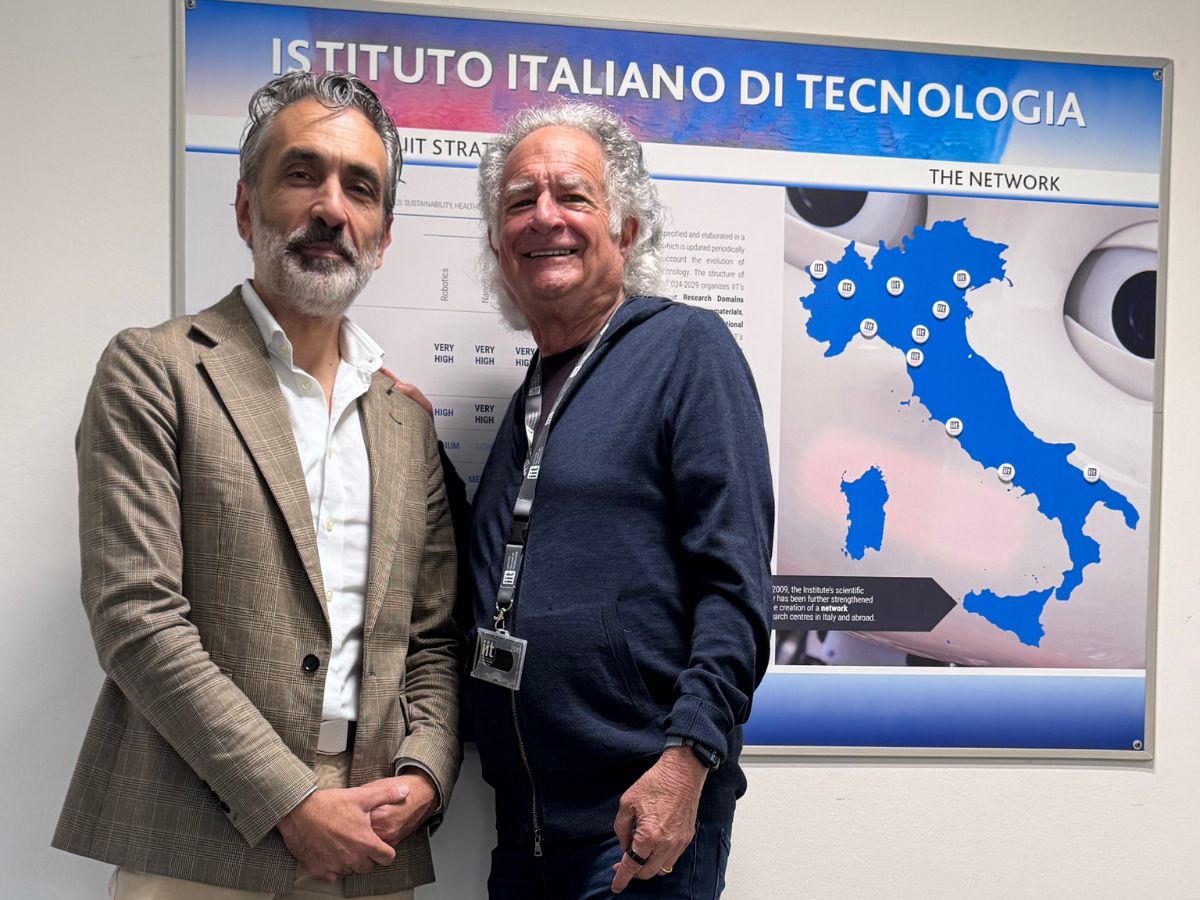The results pave the way for future applications of Ziapin2 combined with photostimulation in the medical field, as an alternative to traditional electrical stimulation, as well as for applications in the new bio-hybrid-robot sector
A research team from the Istituto Italiano di Tecnologia in Milan and from the Politecnico di Milano, coordinated by Guglielmo Lanzani, the Head of the Nanomaterials for Energy and Lifescience unit at IIT, has demonstrated that Ziapin2 molecules can control the contraction of skeletal muscle cells, which are responsible for the voluntary contraction of muscles, through the use of light.
The Ziapin2 molecule, patented in Europe, the United States and Japan in 2018 by IIT and the Politecnico di Milano and presented for the first time in 2020 in Nature Nanotechnology (https://www.nature.com/articles/s41565-019-0632-6), is a phototransducer, i.e., it absorbs light and transforms it into an electrical signal. It was developed and engineered in the laboratory coordinated by Chiara Bertarelli, full professor at the Politecnico di Milano.
The results of the study, which were published in the magazine Nature Communications Biology, pave the way for the implementation of photostimulation techniques combined with Ziapin2 as an alternative to the use of traditional electrodes in specific cases and for specific conditions, as it offers a range of advantages, including increased versatility, as light can be administered remotely without contact; increased precision, as elevated selectivity in terms of space and time has been recorded; lower levels of invasiveness and toxicity.
The study was carried out with the support of funding from the PRIN (Research Projects of Significant National Interest) Programme, “Membrane-targeted light driven nanoactuators for neuro-stimulation”.
In particular, to demonstrate the feasibility of the new approach, the multi-disciplinary team administered Ziapin2 to laboratory grown skeletal muscle cells (C2C12). This is a cellular model that is ideal for assessing the capacity of the phototransducers due to its negligible spontaneous contractile activity. Furthermore, this has allowed the use of animal models to be avoided.
When the cells to which Ziapin2 has been administered are illuminated, the light absorbed is transformed into electricity, which induces contractions.
The research team compared light stimulation with electrical stimulation, identifying advantages with the use of photostimulation, above all for the long-term treatment of patients. The prolonged use of electrodes can, in fact, lead to a deterioration of patients’ tissue and of the electrodes themselves, leading to a reduction in the effectiveness of the treatment.
There are currently many patients suffering from neurodegenerative disorders such as Parkinson’s, muscular conditions, the consequences of strokes or harm to the central nervous system, including loss of vision, who cannot be treated pharmacologically, but who benefit from the direct stimulation of muscular or nerve cells via electrodes, generally in metal, that transmit electrical current.
Light stimulation would lead to reduced cellular stress, as it is possible to stimulate a localised point, unlike the more general electrical field covered by electrodes; it would ensure lower toxicity as a range of wavelengths can be used, and it would eliminate the need for contact, as light can be applied remotely.
These promising characteristics mean that photostimulation could be used in the future above all in the field of cardiology, in muscular rehabilitation (functional stimulation) and to treat patients affected by neuronal degeneration, as well as in the particular field of hybrid robots made with both artificial and biological components. The latter can be used for fundamental studies, for environmental exploration or medical applications, as well as in the field of prosthetics, as they are fully biocompatible.
“The results that we have obtained suggest that it is possible to intervene with light in a precise and less-invasive manner on muscular tissue, aiding current techniques for the care of a number of skeletal muscle conditions”, stated Guglielmo Lanzani, a Researcher from the Istituto Italiano di Tecnologia.
“The targeting of the cellular membrane through the molecular designing of phototransducers is an innovative approach. Ziapin2 has once again demonstrated its effectiveness and potential for the photo-induced stimulation of cells, with an ever-wider range of applications in the medical field and significant potential in the development of hybrid robots” added Chiara Bertarelli from the “Giulio Natta” department of Chemistry, Materials and Chemical Engineering at the Politecnico di Milano.
For further information: “Skeletal muscle cells opto-stimulation by intramembrane molecular transducers”. Authors: Ilaria Venturino, Vito Vurro, Silvio Bonfadini, Matteo Moschetta, Sara Perotto, Valentina Sesti, Luigino Criante, Chiara Bertarelli & Guglielmo Lanzani.





